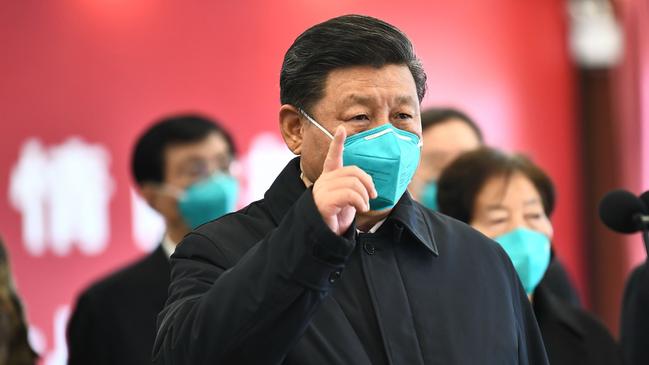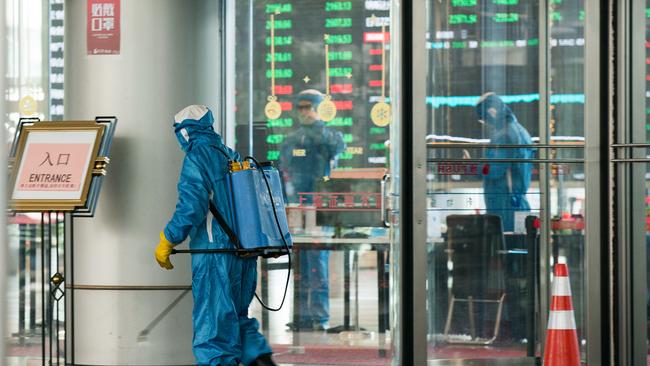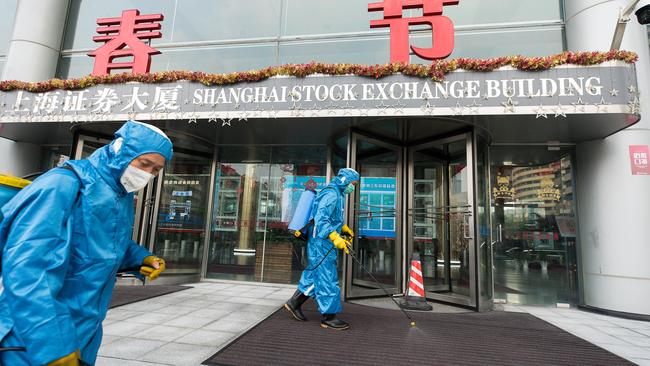Commodities key to outlook as China’s zero-Covid policy and property slump creates headwinds
Australian shares outperformed global markets but watchers think they might be in the latter stages of a bear-market rally.

The commodity price outlook may be a key swing factor for Australian shares in 2023.
Strong energy and battery metals prices, together with a lower exchange rate and a relatively light tech-sector exposure, has resulted in Australian shares outperforming global markets in 2023.
The S&P/ASX 200 index is 2.6 per cent year to date, versus 16 per cent for the S&P 500.
But after rebounding 13 per cent in the past two months amid slower interest rate hikes by central banks, the Australian market may be in the later stages of a bear market rally.
The sustainability of the rebound may be tested on several fronts.
The S&P 500 is up 11 per cent so far this quarter, near the top of the 8-12 per cent rebound that typically follows falls of more than 20 per cent in the first three quarters.
A US recession is increasingly likely after aggressive rate hikes, based on yield curve inversions, weak leading indicators and US money supply contraction, particularly as the EU, UK and Japan also face recessions and Chinese growth remains weak due to its zero-Covid policy and property downturn.
Canaccord’s Tony Dwyer says the S&P 500 has never set a bear market low before a recession starts.
Of course, with recession looming and inflation cooling, the Fed may cut sooner than expected.
But at least since 1988, the first US interest rate cut has not signalled a bottom in US shares.
Other things being equal, the US market will again fare worse than Australia if the bear market resumes on the back of sustained US rate hikes hitting growth sector valuations.

However, investment bank Citi sees China’s zero-Covid policy and property slump as “headwinds” for the world’s biggest commodity consumer and Australia’s biggest trading partner.
“While we expect China to eventually shift away from zero-Covid, more meaningful steps might only occur after the National People’s Congress in March and could take time to implement,” said Citi strategists, including Ed Morse.
While there have been some tweaks of the zero-Covid policy, many thought it would end this month. This week, China’s Covid case numbers hit record highs.
“This could mean that boosts to economic activity and commodities demand might only materialise after the March quarter,” Citi strategists said.
“As the markets tend to be forward looking, recent price rallies in a number of commodities in reaction to the prospect of China’s reopening look to have run ahead of themselves.
“In particular, price increases lately in certain metals and bulk commodities look optimistic amid a return of lockdowns in China and broader weakness in global demand, such that we instead expect more durable price recoveries later in 2023.”
China’s recent announcement of 20 measures to “optimise Covid prevention and control”, were seen as a signal of a major policy shift that should eventually lead to an end to the zero-Covid policy, causing a broad rally in Chinese markets and commodities with heavy exposure to China.
Meanwhile, public health conditions continue to be challenging as China heads into its first winter with Omicron, potentially leading to a return of more lockdowns, despite the National Health Commission’s announcement.
“Top party propaganda also continues to assert zero Covid on the one hand but on the other hand suggests Covid containment measures should not be overly broad and draconian, thereby adding to the confusion,” Citi strategists said.
As well as a “bumpy” path to China’s Covid recovery, especially over winter, they noted that China faces spill-overs from global demand shocks, and the weakness in the property sector looks set to persist for longer, with potential negative impacts on commodities most exposed to this sector.

“Even with the prospect of some Covid policy relaxation, weakness in the property market should continue to weigh on demand for related commodities, despite 16 measures announced recently to support the deeply troubled sector,” they said.
While potentially giving a lifeline to developers and saving some unfinished projects, those measures “still fall short on spurring a meaningful demand recovery”, in their view indicating an “L-shaped” recovery which would give little upside potential for commodities demand.
“The demand destruction in the property market due to zero Covid, overall deteriorating economic conditions and consumer sentiment, as well as speculation on potential “common prosperity” measures in Xi’s third term, including property taxes, should continue to weigh on the property market over the years to come,” Citi said.
The zero-Covid policy has “dealt long-lasting damage to consumer confidence and investor sentiment” and “the days of the property sector driving economic growth in China could be gone forever … despite some potential upside on reopening, the overall weakness in this sector should continue to weigh on the demand for related metals and bulk commodities for years to come.”
On the more optimistic side, Wealthi economist Peter Esho highlights the once-in-a-lifetime energy transition – led by China, as a long-term driver of commodity demand.
“There are around 1.4 billion vehicles in the world currently powered by fossil fuels,” he said.
“In comparison, we estimate six to seven million electric vehicles in the world and the number is expected to rise to 150 to 200 million by 2030. The adoption curve is enormous.
“China is the world’s largest manufacturer of electric cars and a major player in the supply chain for critical components.
“The ramifications for our entire energy ecosystem are enormous. Iron ore, lithium, nickel, copper. The transition to a cleaner economy will require all of these inputs.”




To join the conversation, please log in. Don't have an account? Register
Join the conversation, you are commenting as Logout